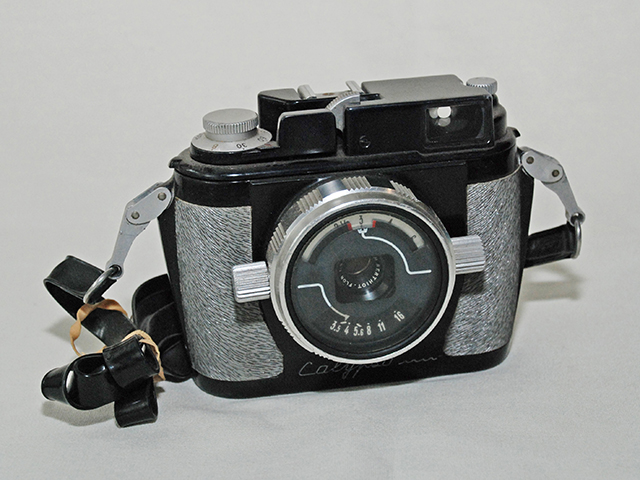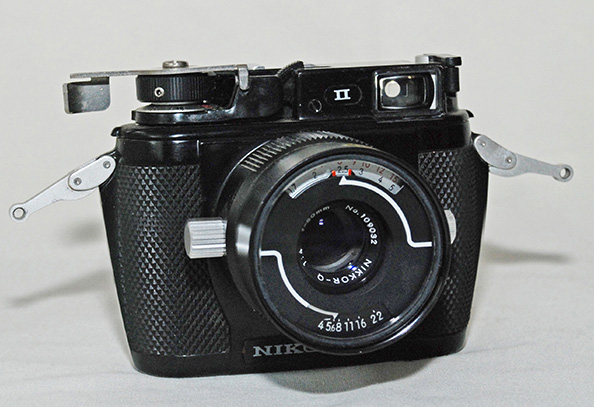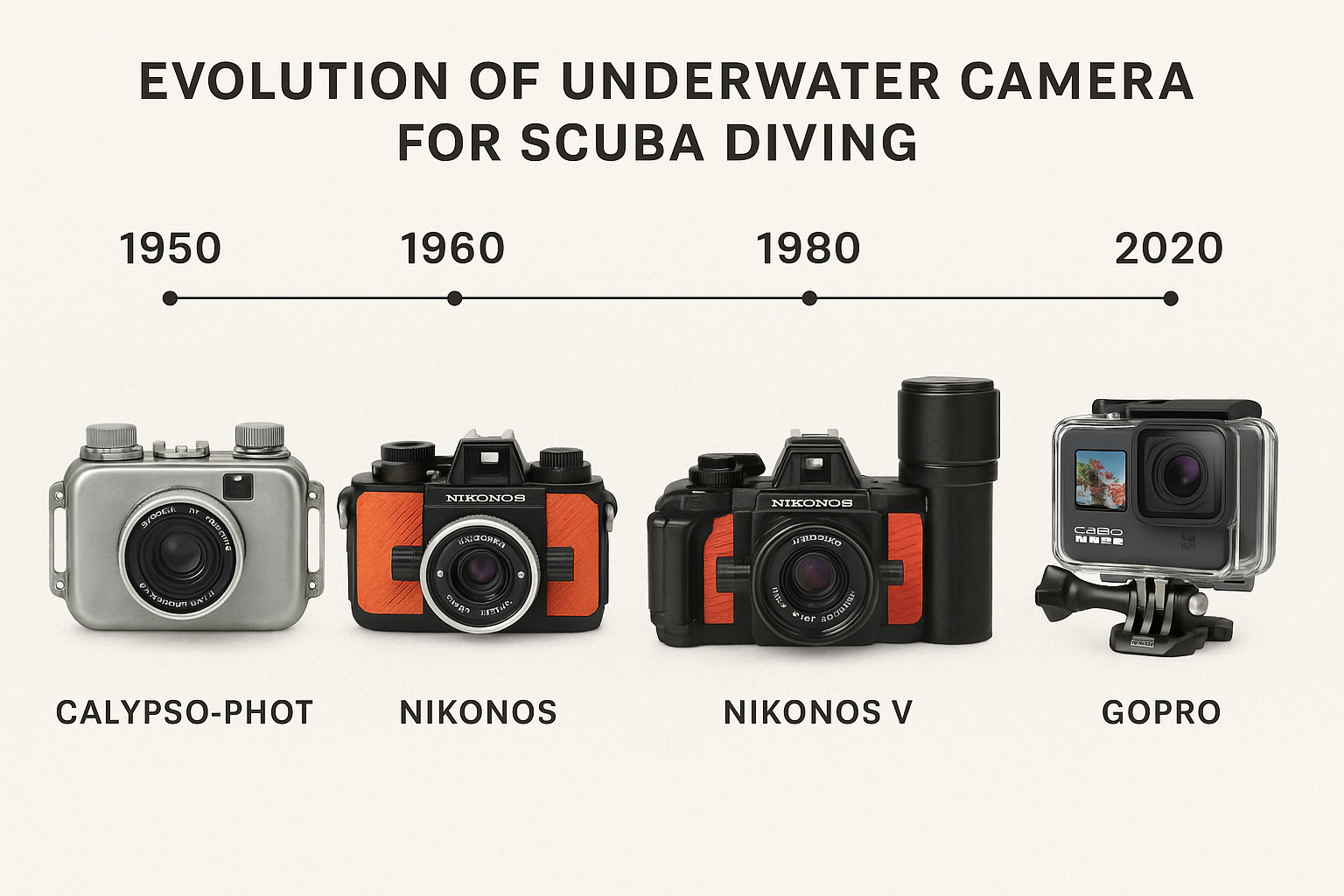The evolution of underwater cameras for scuba diving from 1950 to 2020 largely mirrors the broader technological advances in photography, materials science, and diving equipment. Here’s a decade-by-decade breakdown of the key developments:
1950s: Pioneering Years
-
Equipment: Early underwater photography relied on adapted surface cameras in specially made waterproof housings.
-
Key Innovators: Hans Hass and Jacques Cousteau popularized underwater exploration and photography.
-
Notable Tech: The Calypso-Phot (developed by Jean de Wouters for Cousteau) was released in 1957 and became the basis for the Nikonos series.
-
Challenges: Bulky equipment, difficult handling, limited depth rating, and lack of reliable sealing mechanisms.
1960s: Rise of the Nikonos
-
Nikonos I (1963): A rugged, amphibious 35mm rangefinder camera. It was simple, reliable, and used interchangeable lenses.
-
Impact: The Nikonos line became the gold standard for decades.
-
Use Case: Preferred by scientists, journalists, and hobbyists for its compactness and water resistance up to 50 meters (later models up to 100m).
1970s: Expansion and Refinement
-
Nikonos II and III: Improvements in ergonomics, lens quality, and shutter control.
-
Introduction of Flash Systems: External strobes became popular for color photography at depth.
-
Underwater Housings: More third-party companies started making housings for mainstream cameras (e.g., Canon, Nikon SLRs).
1980s: SLR Integration
-
Nikonos IV-A (1980): Introduced automatic exposure control.
-
Nikonos V (1984): Added TTL (Through The Lens) metering and improved electronics.
-
Housings Boom: Companies like Ikelite, Subal, and Sea & Sea advanced the housing market, making SLR photography viable underwater.
1990s: Autofocus and Digital Beginnings
-
Housings for Autofocus SLRs: Popularity of AF Nikon and Canon bodies led to sophisticated housings with full control access.
-
Compact Film Cameras: Olympus and Sea & Sea produced fixed-lens waterproof point-and-shoots.
-
Late 1990s: First digital cameras appeared with rudimentary housings, though quality was still inferior to film.
2000s: Digital Revolution
-
Explosion of Digital Cameras: Canon, Nikon, Sony, and Olympus introduced robust compacts and DSLRs, often with compatible underwater housings.
-
Rise of Dedicated UW Camera Brands: Sealife, Fantasea, and Sea & Sea offered complete kits for divers.
-
Lighting Systems: LED video lights started to complement strobes, especially with the rise of digital video.
2010s: Mirrorless & 4K Video
-
Mirrorless Cameras: Smaller than DSLRs with comparable quality; easier to house and handle underwater (Sony Alpha, Olympus OM-D, etc.).
-
4K Video & Hybrid Use: Many underwater photographers began shooting both stills and video.
-
Action Cams: GoPro revolutionized entry-level underwater photography—small, durable, and easy to mount.
-
Smartphone Housings: Dive cases for iPhones and Androids brought casual underwater photography to the masses.
2020: Modern Landscape
-
Pro-Level Systems: Full-frame mirrorless cameras (e.g., Sony A7 series, Canon R5) in high-end housings dominate pro diving.
-
Modular Housings: Systems allow for interchangeable ports, arms, and lighting for any condition or depth.
-
Software Integration: Real-time tethering, in-camera stabilization, and AI autofocus tracking enhance capture.
-
Environmental Awareness: Increased focus on sustainable diving and equipment practices.

Nikonos Calypso is the name of a series of 35mm format cameras specifically designed for underwater photography launched by Nikon in 1963. The early Nikonos cameras were improvements of the Calypso camera, which was an original design by Jacques-Yves Cousteau and Belgian engineer Jean de Wouters . It was produced in France by La Spirotechnique (currently Aqua Lung) until the design was acquired by Nikon to become the Nikonos.
The Nikonos system was immensely popular with both amateur and professional underwater photographers. Its compact design, ease of use, and excellent optical quality set the standard for several decades of underwater imaging. Nikon ceased development and manufacture of new Nikonos cameras in 2001, but the camera remains popular, and there is a large and active secondary market.




